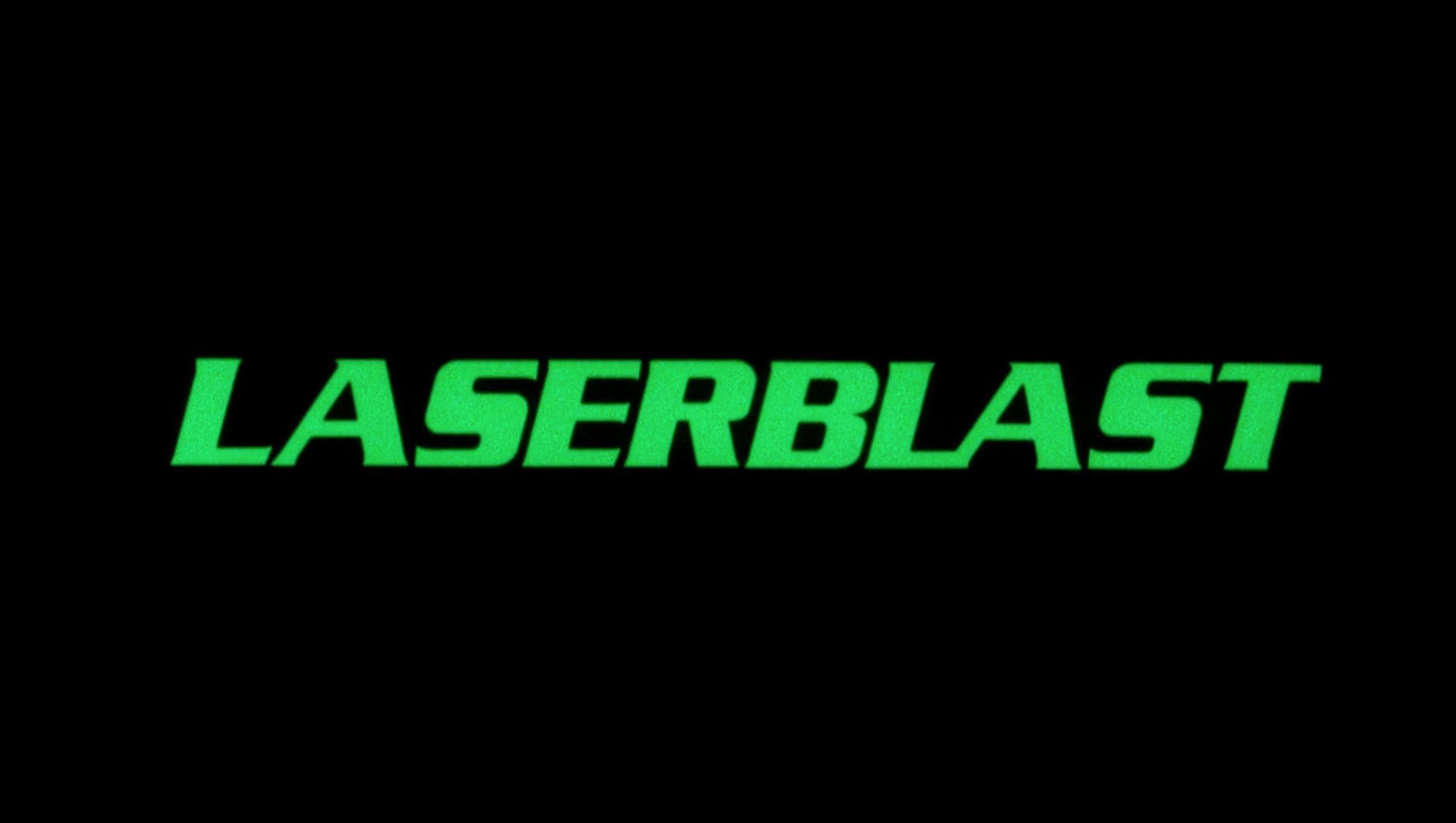 Inevitably, there are spoilers here. Read with care. Thanks!
Inevitably, there are spoilers here. Read with care. Thanks!
What is it? Laserblast, directed by Michael Rae, written by Frank Ray Perilli and Franne Schacht, and starring Kim Milford, Cheryl Smith, Gianni Russo, Roddy McDowell, Keenan Wynn and Eddie Deezen.
First viewing? No, I’m pretty sure I’d seen it when I was a kid, as well as the Mystery Science Theater 3000 episode, but my memories of it were sketchy, so possibly not complete viewings.
What’s it about? A sad sack teen (Milford), who is miserable despite having a beautiful girlfriend (Smith) who loves him, finds a dangerous alien weapon in the desert. The weapon gives him the power to take revenge on the bullies and authority figures in his life, but also begins to transform him into a monster.
What are your thoughts about it? I daresay this is the most ’70s movie in this series so far, at least from an experiential standpoint. I want to remember the 1970s like they were an Alan J. Pakula film: cold sleek architecture, incredible fashions, dark shadows contrasted with fluorescent lighting that seemed to hum with danger and possibility. My actual 1970s was the Laserblast version: a land of yellow landscapes and brown interiors, shirtless men wearing jeans, everything feeling old and ready to fall apart, and the sun beating down on all of it, everything illuminated and inescapable. Perhaps it’s a tautology, but Laserblast could only come from people who lived in a Laserblast world.
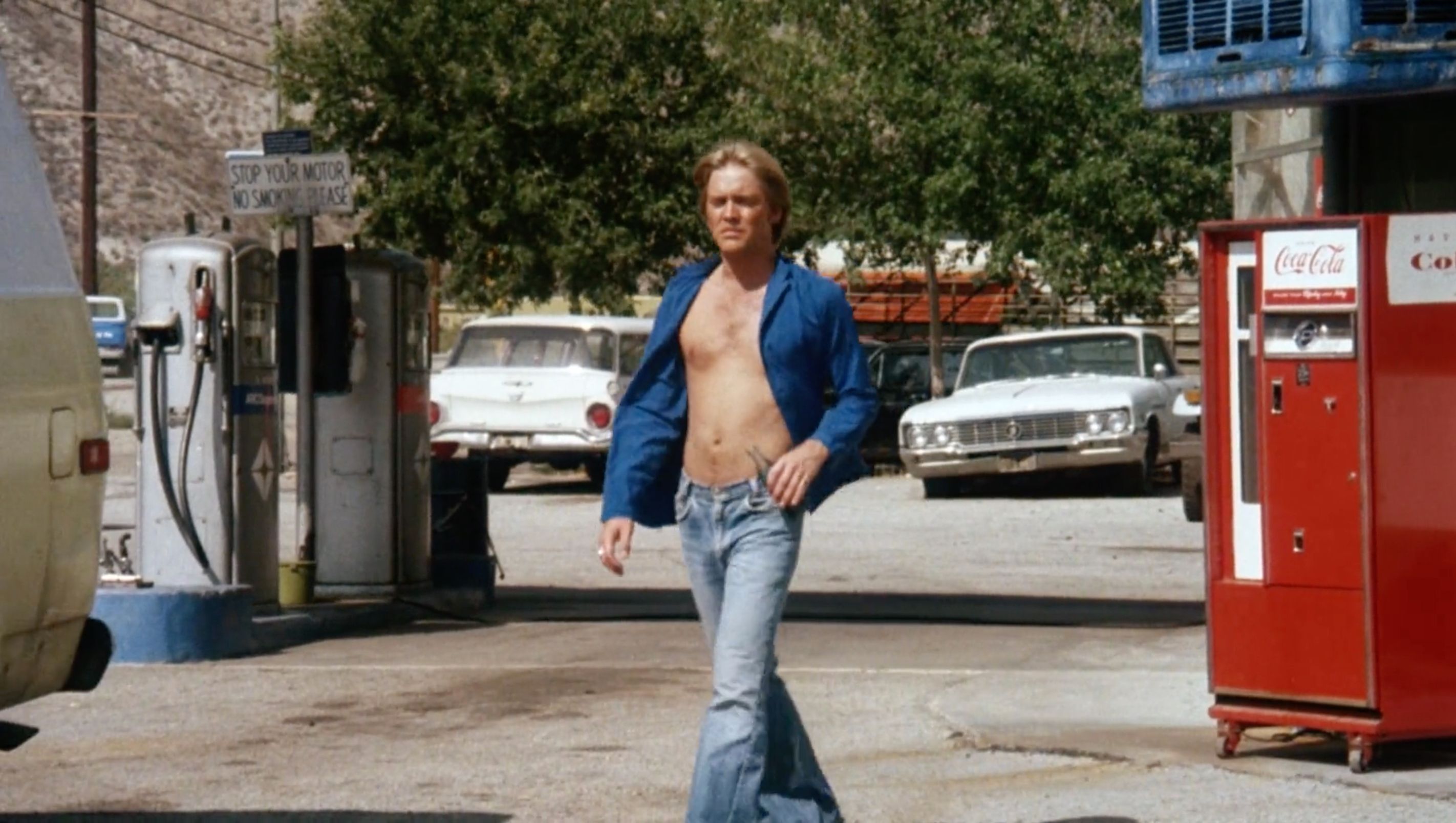 Welcome to my 1970s.
Welcome to my 1970s.
Laserblast is a weird movie, an amalgam of not-thought-through ideas, like Playdoh remnants mushed together by seemingly-stoned writers. It raises questions, almost too many. Who was the green guy at the beginning who first (?) had the Laserblast? (I’m calling the portable beam cannon the Laserblast.) Was he an alien or a human who went through a transformation like Billy? Is the fact that the green guy is wearing an off-brand Star Trek uniform evidence for an alien, or against? If he is an alien, is he the first to wield the Laserblast? Why did the aliens leave the Laserblast? (Did they take an unseen cannolli instead?) Did the aliens make the Laserblast, or is it just as alien to them as to us? Who is this Tony Craig guy, the government agent? What does he know about the Laserblast? What does he have to with “Cherry Point” (hush hush!) and “Operation Sand Dust” (hush hush!)? Did Operation Sand Dust make the Laserblast? Why doesn’t Tony Craig grab Billy when it’s obvious all the stuff blowing up centers around him? What is this New York-looking city that exists in what I presume is the Mojave Desert? Were the aliens supposed to be gigantic all along, as indicated in the shot of one of them on the rooftop, or was that a mistake? What is Billy turning into, anyway? Why is Billy’s skin turning to metal just underneath the Lasernecklace? (I’m calling the necklace that’s required to use the weapon the Lasernecklace.) Speaking of the Lasernecklace, why is it necessary to use the Laserblast? Since the Laserblast destroys the Coke bottle without anyone wielding it, is it actually sentient? Is it parasitical? Is it literally, not just metaphorically, controlling Billy’s mind? If so, what does it want?
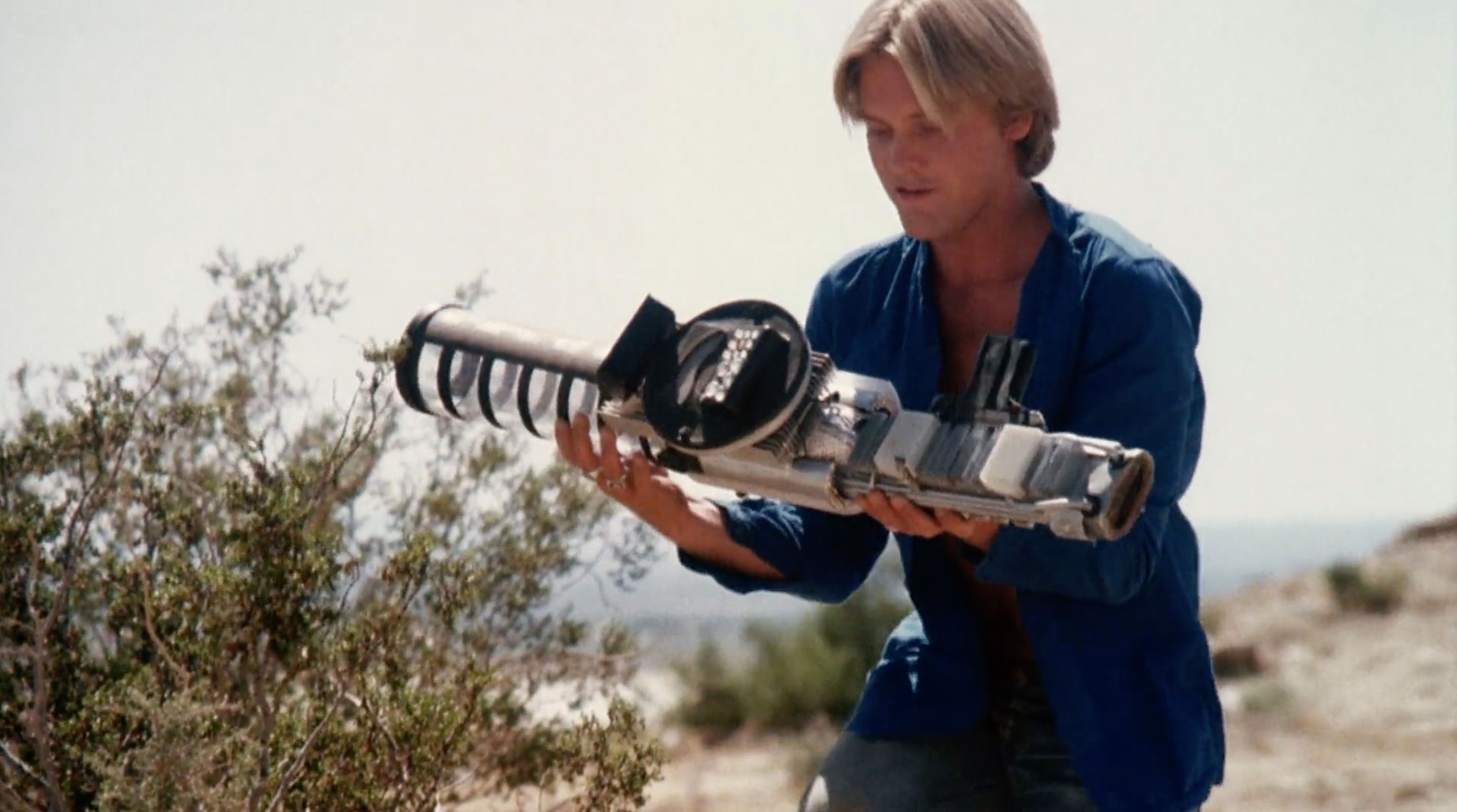 One thing that makes rpg writing difficult is the need for good, clear descriptions. How the hell would you describe this thing in, for example, a novel? It defeats me. And why does it look like it has a CD player attached to it?
One thing that makes rpg writing difficult is the need for good, clear descriptions. How the hell would you describe this thing in, for example, a novel? It defeats me. And why does it look like it has a CD player attached to it?
Let me be clear: I don’t want any of these questions answered by the movie. These huge gaps are features, not bugs. However obscure the literal story is — and those twenty-one questions suggest it’s pretty tenebrous — the metaphorical story is crystal clear. This is a story about an emasculated teen who gets a giant phallic symbol and loses his mind because of it.
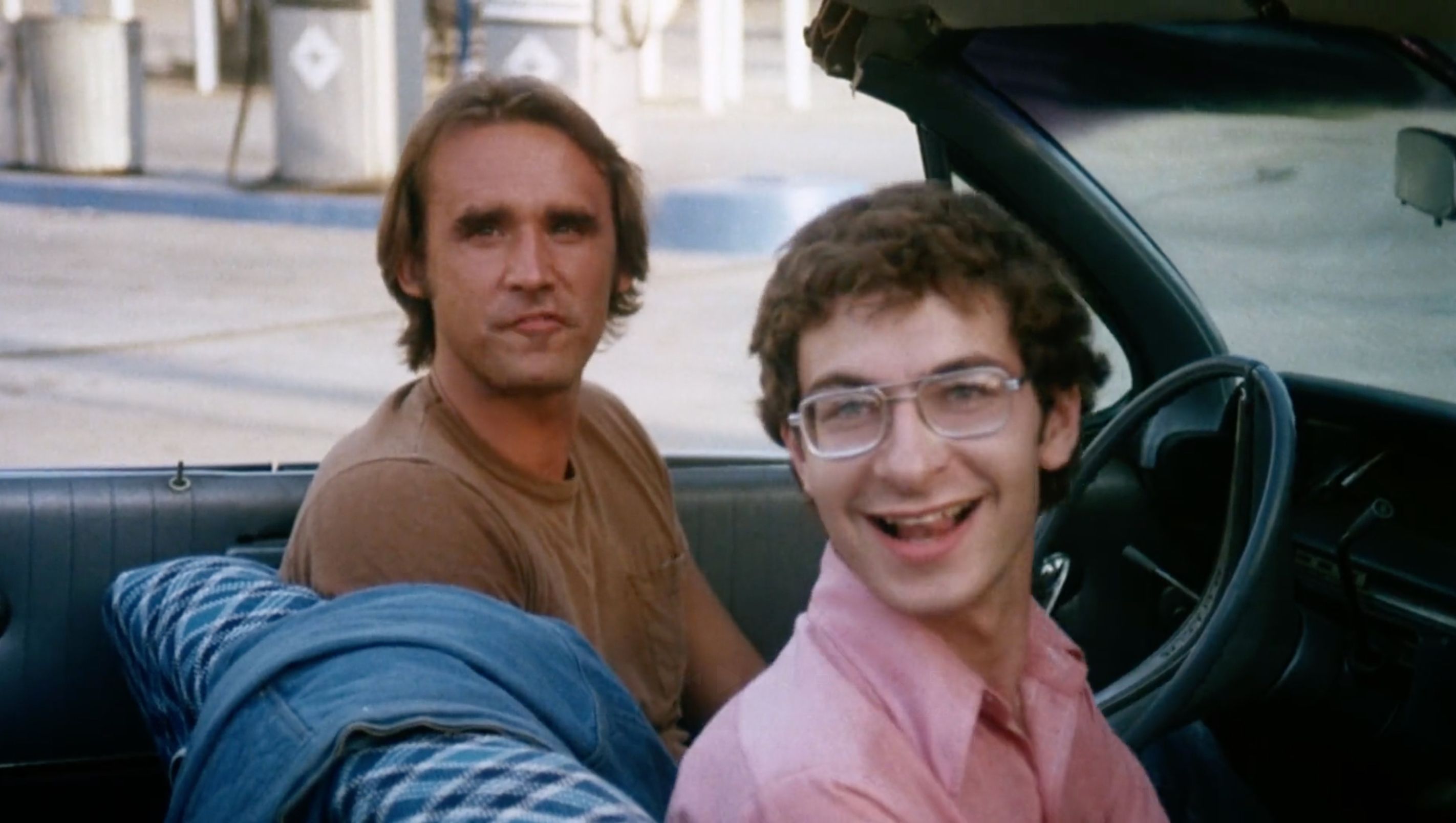 Didn’t really get to talk about these two, Chuck (Mike Bobenko) and Froggy (the legendary Eddie Deezen). Why does the 1978 jock let the 1978 nerd hang out with him? Between their constant car rides together and their attempted rape of Kathy, let’s say I have some theories. (ETA 1/10/24: I’ll just come out, no pun intended, and say it: Chuck and Froggy, in the parlance of the times, are gay for each other. Their attempted rape of Kathy is both an attempt to deny this and a way to sublimate their desire for each other.
Didn’t really get to talk about these two, Chuck (Mike Bobenko) and Froggy (the legendary Eddie Deezen). Why does the 1978 jock let the 1978 nerd hang out with him? Between their constant car rides together and their attempted rape of Kathy, let’s say I have some theories. (ETA 1/10/24: I’ll just come out, no pun intended, and say it: Chuck and Froggy, in the parlance of the times, are gay for each other. Their attempted rape of Kathy is both an attempt to deny this and a way to sublimate their desire for each other.
Not to belabor the point, but Billy feels powerless. His only parent leaves him on his own. The local cops harass him simply because they can. He’s bullied by a jock-type and, worse, an honest-to-Toby Radloff nerd. It’s right after this moment that Billy finds the weapon in the desert. But he doesn’t find it, does he? In one of those “stupid story, clever fable” moments, the Laserblast destroys the Coke bottle by itself, alerting Billy of its presence. It doesn’t make a lick of sense in the context of the established “rules” of the Laserblast, but as the element of a temptation/corruption narrative, it’s perfect.
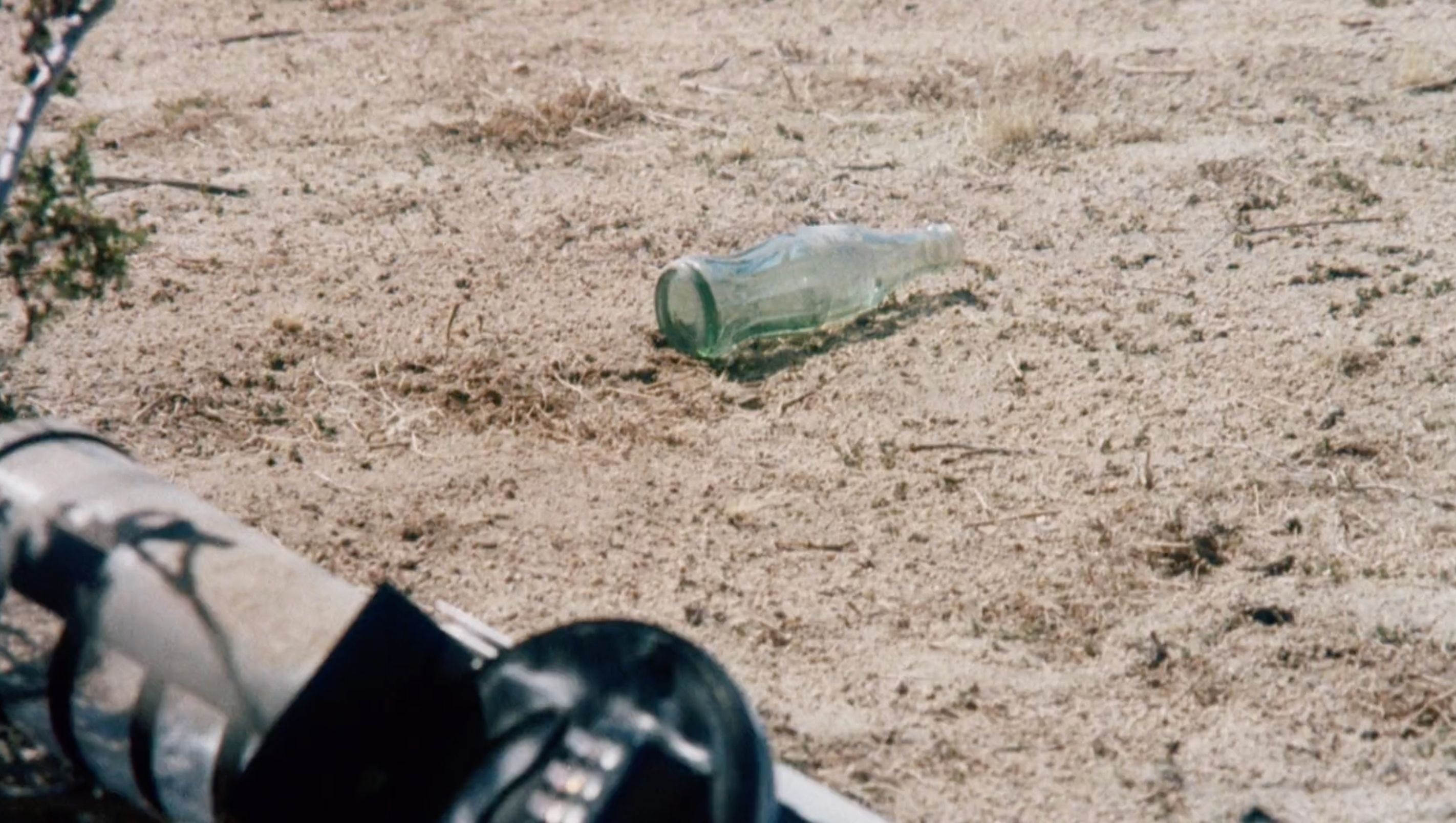 “Put away your childish sugar water, Billy! Pick me up to know true power!”
“Put away your childish sugar water, Billy! Pick me up to know true power!”
At first, the Laserblast is all fun and games for Billy. (“Pow!” he shouts while pretending to shoot it and swinging it around like a little kid.) Soon after though, the jock and the nerd attempt to rape Billy’s girlfriend Kathy, and he doesn’t so much save her from sexual assault as she saves him from a beating. That’s when he begins to transform. Over the course of the second act, Billy keeps moving back and forth between normal and monster. It isn’t clear how much Billy really knows about what the Laserblast is doing to him, and how much he’s being controlled and how much he’s simply acquiesced. Interestingly, though, it isn’t until Kathy discovers the truth that Billy loses himself completely to the green side. Apparently, there’s no going back at that point, suggesting that Billy, too late, realizes Kathy’s love should’ve been enough, and that he’s thrown it away to satisfy his need for revenge, power, and dominance. When the end comes, Billy has been reduced to the same childish teen that unironically shouts “Pow!” but now the destruction is real.
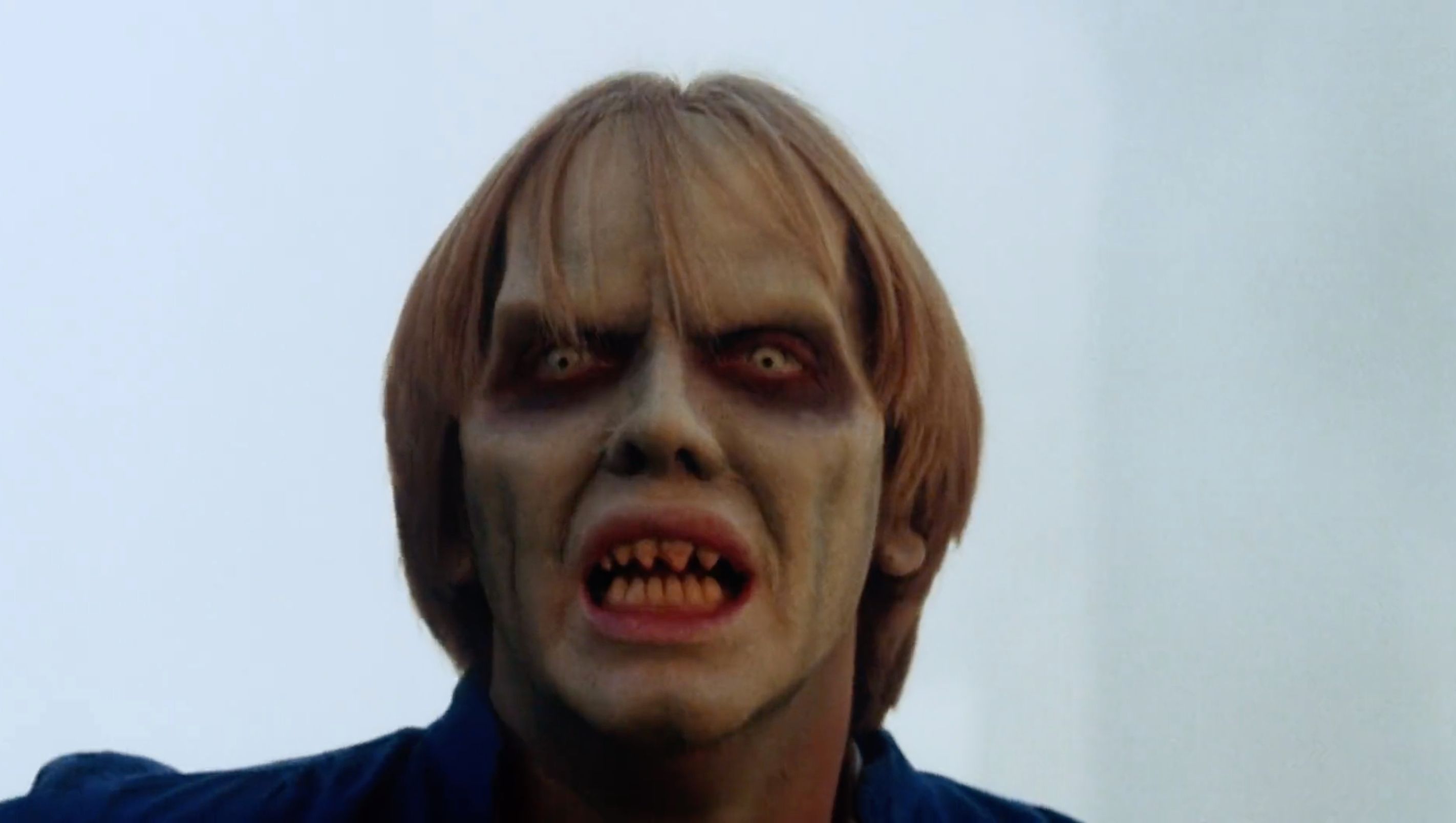 This is the ideal male body. You may not like it, but this is what peak performance looks like.
This is the ideal male body. You may not like it, but this is what peak performance looks like.
Despite this subtextual thread, Laserblast isn’t a good movie. The acting is functional at best, the direction not much better than that, the characters are barely interesting, the story and dialogue risible. But I love it anyway, as a time capsule, as a tale about toxic masculinity, as a vessel for doped-out weirdness.
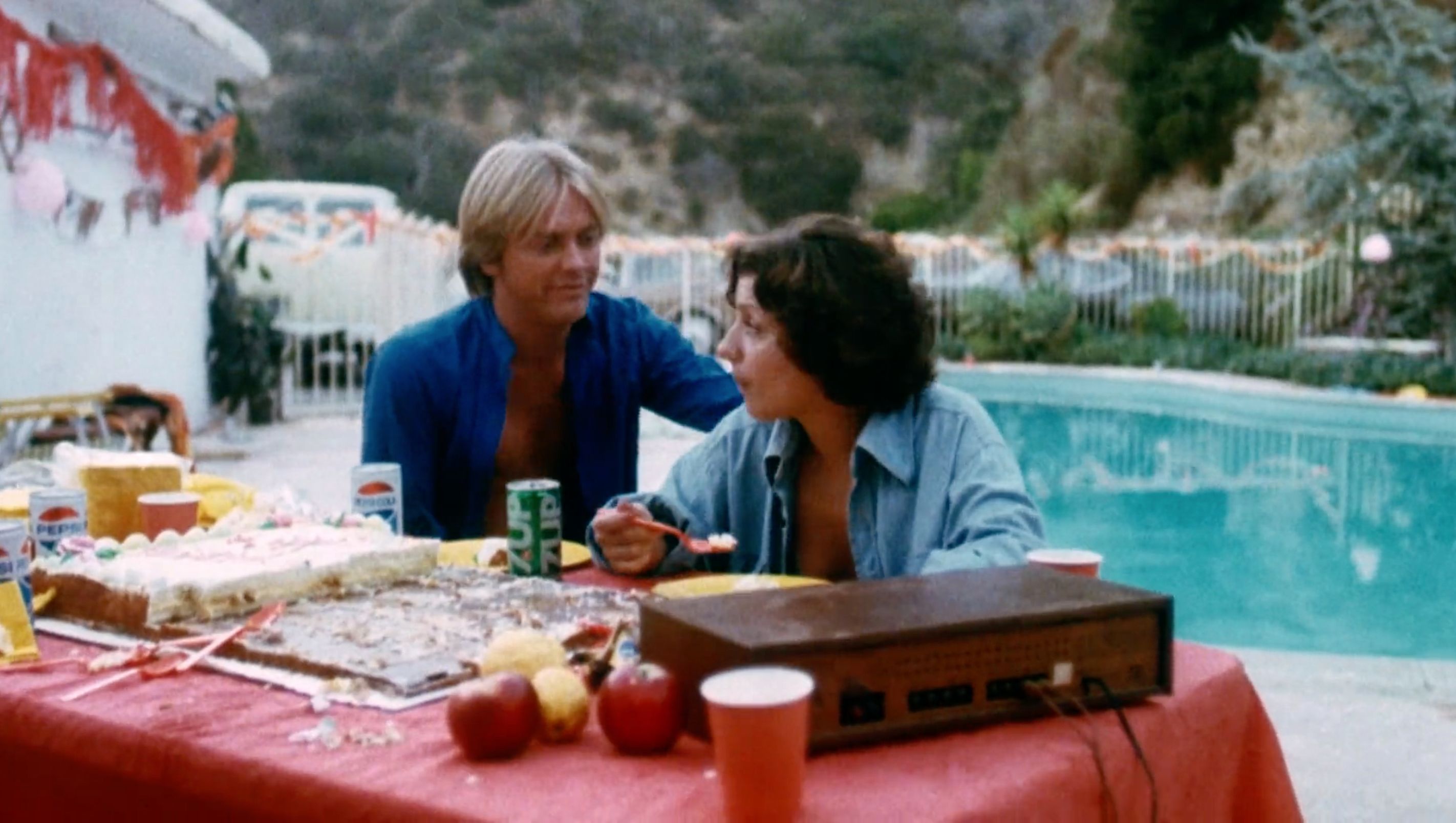 Didn’t get to talk about the incredibly ’70s house with the incredibly ’70s pool party. Here, Billy consoles lonely, frustrated Franny (Joanna Lipari), his equivalent. I keep thinking about a version where Franny gets the Laserblast. (ETA 1/10/24: It wasn’t until later that I realized that the film was co-written by Franne Schacht, who plays the sheriff’s secretary. It seems likely the older Franne wrote younger Franny as a bit of autobiography, and I’d bet big money she also thought about Laserblast Franny.)
Didn’t get to talk about the incredibly ’70s house with the incredibly ’70s pool party. Here, Billy consoles lonely, frustrated Franny (Joanna Lipari), his equivalent. I keep thinking about a version where Franny gets the Laserblast. (ETA 1/10/24: It wasn’t until later that I realized that the film was co-written by Franne Schacht, who plays the sheriff’s secretary. It seems likely the older Franne wrote younger Franny as a bit of autobiography, and I’d bet big money she also thought about Laserblast Franny.)
How many stars out of five? Three. This is a good time to remind everyone that my rating system is based not on some objective ideal of “worth,” but simply how much I enjoyed the experience of watching it.
Where can I stream it? As of this writing1, you can watch it for free on Tubi, Hoopla, Pluto TV, Plex, and The Roku Channel, or rent or buy from Amazon Video.
What can we take from it? We’re going to take the most obvious we can — we’re going to take the Laserblast. Pray I can get through this without turning into a green ghoul.
The existence of the Laserblast raises a number of questions, some of which I posed above. I’m not going to answer those questions2. The idea behind this part of the post is to translate what’s in the movie as closely as I can, taking liberties as necessary. Sometimes that ends with a piece of game writing that only makes sense within the confines of its source material. Que sera, sera!
The Laserblast is, in terms of the Cypher System, an artifact. An artifact is much like a cypher, except that it can usually be used more than once. An artifact is made of four parts. The level, like all levels in the game, range from one to ten. The level gives a general idea of how powerful an artifact is, but unless an ability is directly tied to an artifact’s level, it’s, as far as I can tell, a fairly meaningless number. The form is a description of the artifact. The effect details what the artifact actually does. Depletion is listed as d6, d10, d20, d100, Automatic or —. When the artifact is used, the appropriate die is rolled, and if it comes up “1” then the artifact is depleted and probably cannot be used again. “Automatic” means it is depleted immediately, while a — means that it never depletes.
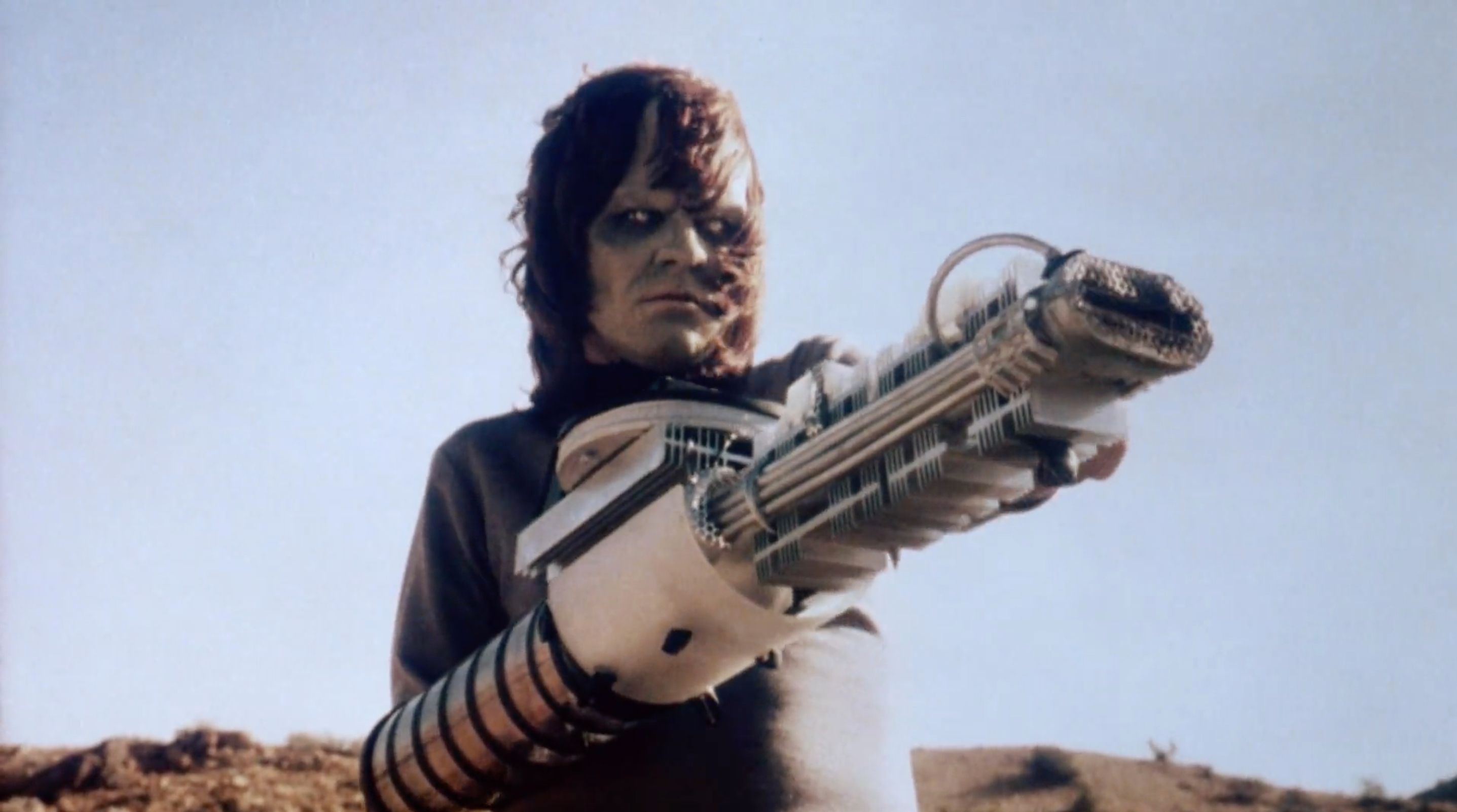 THE LASERBLAST AND THE LASERNECKLACE (ARTIFACT)
THE LASERBLAST AND THE LASERNECKLACE (ARTIFACT)
Level: 7
Form: A beam weapon, approximately three feet long, made of metal and plastic. It is wielded by placing one arm inside the clear plastic tube at one end, and then holding it by the black handle with the other hand. The weapon doesn’t work unless the wielder is also wearing the Lasernecklace. The Lasernecklace is a pear-shaped, gunmetal gray object that looks like a grenade, covered in spherical bumps, and hangs from a thick white cord.
Effect: While wearing the Lasernecklace and holding the Laserblast correctly, you can make a Speed task to fire a beam of energy that does 7 damage. You can increase the damage with Effort, but it must be spent from Intellect. It will instantly destroy any vehicle or object of level 7 or less3. However, each time you use the Laserblast, you must make an Intellect task with a difficulty equal to the number of times you’ve used it. If you succeed, nothing happens. If you fail, then you begin a transformation into a green-skinned, fanged creature only motivated by rage. The change is gradual. The first time, your eyes will become sunken and your skin pallid, but by the final time, your skin will be green, your pupils dead white, and your teeth pointed and sharp. You cannot turn back into your normal form until you have either attacked someone you feel has wronged you, or you otherwise cause a large amount of destruction. Once you turn back to normal, the number of uses for determing transformation is reset to zero. Finally, once you have turned into the green creature seven times, you cannot change back to normal. You are permanently a green rage monster.
Depletion: d100
Next time on Against the ’70s: Phantasm (1979, Don Coscarelli)
Originally published 12/20/21 on Substack.